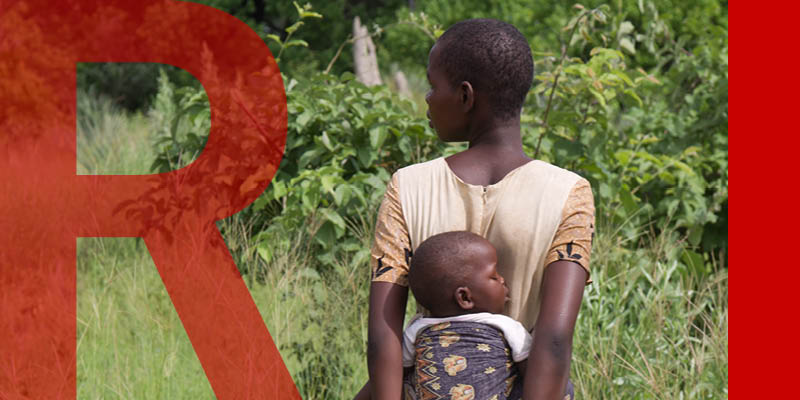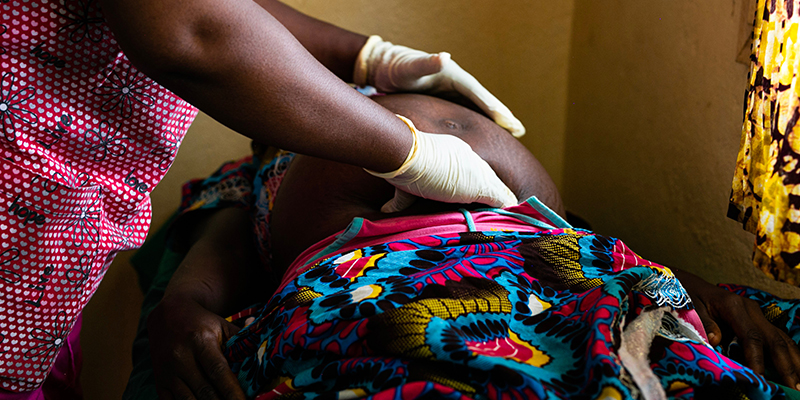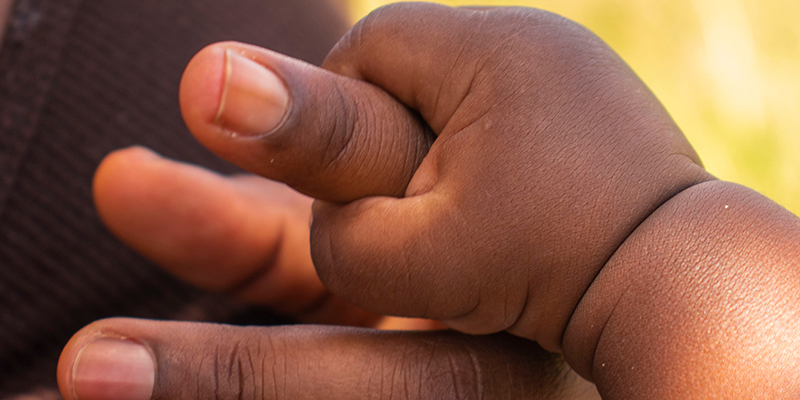Saving mothers’ lives with interdisciplinary research
 Professor Shane Doyle and Professor Jane Plastow's research aimed to tackle Kenya's high maternal mortality rate through an interdisciplinary approach. Collaborating with experts in linguistics, human behaviour, and the social sciences, the team examined the complex factors contributing to maternal deaths, including miscommunication between clinical staff and patients and cultural attitudes towards healthcare.
Professor Shane Doyle and Professor Jane Plastow's research aimed to tackle Kenya's high maternal mortality rate through an interdisciplinary approach. Collaborating with experts in linguistics, human behaviour, and the social sciences, the team examined the complex factors contributing to maternal deaths, including miscommunication between clinical staff and patients and cultural attitudes towards healthcare.
By utilising innovative methods like drama-based workshops, the researchers encouraged women and their families to share personal experiences, fostering empowerment and open dialogue regarding maternal health. Their investigations revealed that while women displayed confidence in domestic settings, they often became passive in clinical environments, highlighting a crucial area for intervention.
The impact of this research is significant; it not only sheds light on the multifaceted causes of maternal mortality in Kenya but also advocates for a holistic understanding that can inform targeted strategies to improve maternal health outcomes, ultimately aiming to save lives and enhance healthcare quality for women in the region.
Key information
- Major funders: AHRC-MRC GCRF; ESRC IAA
- Partners and collaborators: Jaramogi Oginga Odinga Teaching and Referral Hospital, Kenya Medical Research Institute, Kisumu Medical and Education Trust
- Disciplines: anthropology, history, linguistics
- Investigators: Shane Doyle, Wenzel Geissler, Benson Mulemi, Saudah Namyalo, Jane Plastow.
 Disparities in maternal health
Disparities in maternal health
Modern medical knowledge and technology have transformed the experiences of pregnancy and labour over the centuries.
Although it may be true that the percentage of mothers dying in childbirth has decreased globally, the disparity in odds and outcomes between sub-Saharan Africa and the rest of the world has worsened over time.
“The maternal mortality ratio (MMR) in sub-Saharan Africa fell by 33 per cent between 2000 and 2020,” notes Professor Shane Doyle from the University of Leeds.
“That’s encouraging – but at the same time, the risk of dying due to maternity-related causes was 268 times higher there than it is in Western Europe.”
In fact, other figures collected by the World Health Organization, UNICEF and their partners revealed that sub-Saharan Africa alone accounted for a staggeringly disproportionate 70 per cent of all maternal deaths across the globe.

As a Professor of African History who specialises in topics such as medical, family, and demographic history, Shane is all too aware of the longstanding challenges faced by women in much of the continent.
But with such a remarkably high MMR in Kenya, recently ranked as the fourth-worst African nation in terms of maternity-related death by the United States Agency for International Development, Professor Doyle was keen to understand exactly what the current causes were – and play his part in helping change the picture for pregnant women there.
The urgent need for change in Sub-Saharan Africa
It’s easy to focus on numbers when it comes to a topic like maternal mortality in Africa. After all, they’re as plentiful as they are gravely stark.
The global UN Sustainable Development Goal target for 2030 is for an average rate of 70 deaths per 100,000 live births, yet in Kenya, that rate is currently 594.
The country’s 2015 MMR was 43 times higher than in high-income countries, despite its overall crude death rate being on a par with Europe.
But the statistics only tell part of the story. Behind every figure is a story – of real women, real babies, real families and real communities.

Women like Judith Awino, who died on 25 October 2017 as she gave birth to her second child on a dusty roadside in the middle of a nurse’s strike that left her unable to get admitted into hospital.
It was Judith’s 25th birthday. Her baby also died.
“There’s so much tragedy like this in Kenya,” Shane said. “So many awful, heartbreaking stories.
“Judith’s is just one of thousands, each of them completely unique.
“It’s a crisis that is complicated and we can’t pretend that there’s a magic wand we can wave to solve things overnight – but that doesn’t mean we shouldn’t try.”
With so many potential factors at play when it comes to maternal mortality, from hospital facilities and imperfect referral systems to public education and cultural attitudes, Professor Doyle knew that conducting meaningful research would be a long and multifaceted endeavour.
Communication and going beyond frontline medicine
It was already obvious that clinical staff and patients often had problematic relationships, leading to miscommunication or delays in seeking or receiving treatment – delays that can be deadly.
With funding from the UK’s Global Challenges Research Fund, Shane and his co-investigator Professor Jane Plastow from the School of English at Leeds set out to bring together different disciplines and gain a fresh, holistic insight into why maternal death rates in Kenya were so high.
“We worked with colleagues from the University of Oslo, the University of Pretoria and Makerere University who were experts in linguistics, human behaviour and social sciences,” Shane explained.
“By teaming up with medical and public health specialists in Kenya, we could see a bigger picture and use different approaches to learn more about what is really happening across the country.”

One of these methods, for example, saw Jane deploy her expertise as Professor of African Theatre to create drama-based workshops that allowed women and their families to feel empowered to share their personal experiences by talking or acting them out.
“It’s about going beyond the simple explanations or factors such as the prevalence of HIV or malaria, because that can only give you one side of the coin,” Shane said.
“It was already obvious that clinical staff and patients often had problematic relationships, leading to miscommunication or delays in seeking or receiving treatment – delays that can be deadly.
“My aim was to look at the history of this, but also work with our interdisciplinary team to consider the impact of recent changes, too.”
In another strand of the project, meanwhile, anthropologist Benson Mulemi studied encounters at antenatal clinics.
He observed how they were one-sided and noted that while pregnant women seemed confident, curious and articulate about their condition in domestic settings, they instead were passive recipients of information in clinical environments and did not ask questions or seek explanations.
Historical research found that the discord between staff and patients had been influenced by all manner of contexts, including post-colonial nation-building, missionary moralism and a culture of self-sacrifice.
Observe conversations between specialists
Just when Shane was excited by the progress he had made and looking forward to building on the team’s research, disaster struck.
“That was 2019, so soon enough the pandemic came along and scuppered everything,” he explained.
“I wanted to do some impact-related work off the back of the research, but lockdown put paid to that and the funding extensions all expired.”
Undeterred, Shane spotted an opportunity to apply through the Leeds Social Sciences Institute for funding from the Impact Acceleration Account, securing the money he needed to kickstart his plans back into action.
“It came through really quickly, which was ideal because my team was interested in getting back out to Kenya while the relationship between COVID and maternal mortality was still in people’s thinking,” he said.
Nevertheless, arriving in Africa again wasn’t without is challenges.
“National pandemic restrictions meant that although we wanted to disseminate our findings to NGOs, policymakers and practitioners, we were unable to get everyone in one place until January 2023,” Professor Doyle remembered.
Eventually, however, Shane and colleagues gathered no fewer than 60 experts from different walks of life, allowing the researchers to observe conversations between specialists who ordinarily would not have the chance to discuss the subject of maternal mortality in person.
Those discussions highlighted how the pandemic had further increased communities’ suspicions of maternal health workers, and the extent to which women are lost to medical observation following delivery.

Influencing change from the top
Not only did we do that, but they made the main findings of our work their primary recommendations for change, which had the potential to make a lifesaving difference to women in western Kenya for years to come.
The impact-focused research had an immediate effect.
“We focused on western Kenya, where the counties of Kisumu and Siaya have particularly high levels of maternal death,” Professor Doyle recalled.
“At the end of our first workshop, the head of the medical system in part of the region invited us to present our work to people involved in formulating reproductive health policy there.
“Not only did we do that, but they made the main findings of our work their primary recommendations for change, which had the potential to make a lifesaving difference to women in western Kenya for years to come.”
One of those changes seems incredibly simple and straightforward.
Presenting health information in the indigenous language spoken commonly throughout the region, Luo, rather than only in English or the official tongue of Kiswahili would help crucial messages be understood by women who had dropped out of school at an early age.
That’s what this is all about – making conversations happen and helping people look at a massive healthcare inequality through a different lens
Yet the significance of that and other proposals, such as ensuring that maternal health policies are conscious of the social, historical, anthropological and bio-psychosocial connections between illness and health, could only be properly be understood thanks to the efforts of the linguist Saudah Namyalo and other members of Shane’s team.

A postnatal health education community workshop in summer 2024. Image copyright KMET and used with permission.
“That’s what this is all about – making conversations happen and helping people look at a massive healthcare inequality through a different lens” Professor Doyle said.
One of the conversations that started at the January 2023 workshop led to a new collaboration with KMET, a local NGO. KMET had previously focused its maternal health interventions on the antenatal period and on improving delivery outcomes. The dissemination of findings that the weeks after delivery were unusually dangerous for women around Kisumu led to a follow-on project with further funding from the Impact Acceleration Account. Working with KMET and the Department of Health in Kisumu County, Professor Doyle helped to highlight the importance of community-focused maternal healthcare, especially in the postnatal period.
“The hope is that our work will go on in terms of sharing our findings with the NGOs and policymakers in Africa who can make a difference, to ultimately reduce the maternal mortality rates further and save the lives of women like Judith.”
About Shane Doyle
Shane Doyle is Professor of African History at the University of Leeds.
As a Fellow of the Royal Historical Society, his research focuses on topics such as modern family, sexual, and demographic history.
Shane completed his undergraduate degree and PhD at the University of Cambridge.
